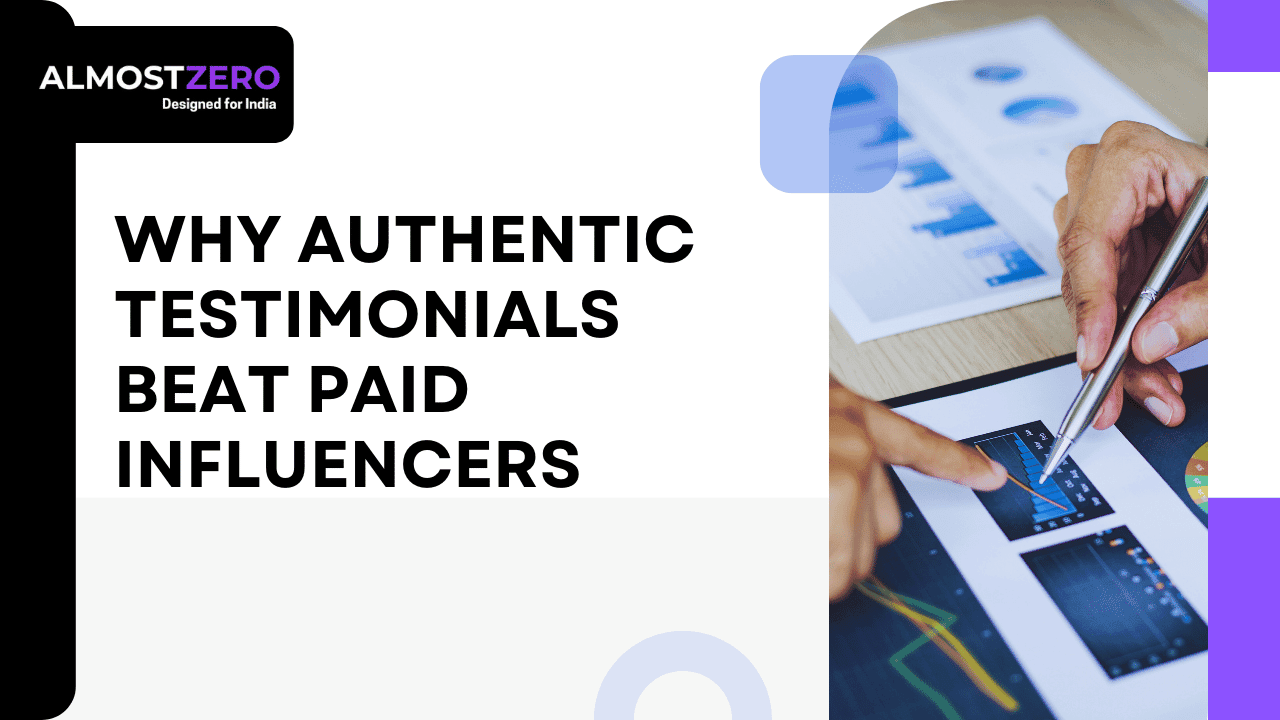Why Authentic Testimonials Beat Paid Influencers

Influencer marketing has been one of the biggest trends in the digital space over the last decade. From Instagram celebrities promoting skincare to YouTube creators endorsing tech gadgets, influencers have shaped consumer behavior in powerful ways.
But as influencer marketing has grown, so has consumer skepticism. People are starting to question: “Is this influencer actually using the product, or are they just being paid to say good things?”
On the other hand, authentic testimonials—genuine stories from real customers—have become a much more effective tool for brands. Why? Because people trust people like themselves far more than celebrities or influencers with massive followings.
In this blog, we’ll explore why authentic testimonials often outperform paid influencers and how your business can use them to build credibility, attract leads, and drive conversions.
The Shift in Consumer Trust
The Rise of Influencer Marketing
Influencers gained popularity because they felt more relatable than traditional celebrities. They built communities around authenticity, lifestyle, and trust. Brands leveraged that trust to sell products.
The Problem with Paid Influencers
As influencer marketing became mainstream, audiences noticed that many endorsements were purely transactional. Sponsored posts filled feeds, and the line between genuine recommendations and paid promotions blurred.
According to surveys:
- 92% of consumers trust recommendations from people they know.
- 70% of consumers trust online reviews from strangers more than paid influencer endorsements.
This is where authentic testimonials have the edge.
Why Authentic Testimonials Beat Paid Influencers
1. Higher Trust Levels
Consumers know influencers are being paid. Testimonials, however, come from everyday people sharing real experiences. That makes them more believable.
- Example: A skincare brand showcasing before-and-after results from actual customers has more impact than an influencer showing a product in a scripted post.
2. Relatability
Testimonials often come from people who mirror the target audience’s challenges and goals. This relatability creates an emotional connection.
- Example: A student sharing how an online course helped them land a job resonates more than a lifestyle influencer posing with the course material.
3. Cost-Effectiveness
Hiring big influencers can cost thousands of dollars per post. Testimonials, on the other hand, often come free—or in exchange for small rewards like discounts.
- Small businesses especially benefit by highlighting customer voices instead of stretching budgets for influencer campaigns.
4. Better for Long-Term Branding
Influencer partnerships often provide short-term spikes in awareness. Authentic testimonials, however, build long-term credibility because they stay evergreen and keep influencing future buyers.
- Example: A case study on a SaaS website continues to build trust for years, unlike a one-off influencer post.
5. Less Saturation, More Authenticity
The influencer market is oversaturated. Audiences scroll past sponsored posts without much thought. Testimonials cut through the noise because they’re unexpected and sincere.
6. Word-of-Mouth at Scale
Authentic testimonials are essentially digital word-of-mouth. Word-of-mouth has always been one of the most powerful drivers of purchase decisions. Unlike influencer posts, testimonials can be repurposed across websites, social ads, emails, and landing pages.
7. Boosts Conversions Directly
While influencers may generate awareness, testimonials push people closer to making a purchase. They act as social proof, reducing hesitation at the decision stage of the funnel.
- Example: E-commerce sites with reviews and testimonials see significantly higher conversion rates than those without.
Real-World Examples
- Glossier
- Built its billion-dollar beauty brand largely on user-generated content and customer testimonials instead of celebrity influencers.
- Airbnb
- Relies heavily on customer reviews and testimonials to drive trust in hosts and properties worldwide.
- Amazon
- Its review system is essentially a testimonial engine—customers often buy based on ratings and real user experiences.
- HubSpot
- Uses case studies and testimonials from businesses to show how their software delivers results.
How to Collect Authentic Testimonials
- Ask at the Right Moment
- Request feedback when customers are happiest—right after a purchase, positive service experience, or success milestone.
- Make It Easy
- Provide simple forms, video prompts, or even WhatsApp reply options to collect testimonials.
- Encourage Detail
- Instead of “Great product!” ask for specifics: “What problem did this solve for you?”
- Use Multiple Formats
- Written testimonials.
- Video reviews.
- Star ratings.
- Case studies.
- Get Permission
- Always ask for consent before using customer testimonials in ads or promotions.
How to Use Testimonials in Ad Campaigns
- Video Ads → Short clips of customers sharing their experiences.
- Carousel Ads → Showcase multiple testimonials across slides.
- Landing Pages → Place testimonials near CTAs to reduce friction.
- Email Marketing → Add customer success stories to nurture sequences.
- Retargeting Ads → Use testimonials to re-engage users who visited but didn’t convert.
Best Practices for Using Testimonials
- Keep them short, specific, and relatable.
- Pair testimonials with real customer photos or videos for added authenticity.
- Highlight outcomes (savings, time gained, transformation) rather than vague praise.
- Use testimonials across the buyer journey: awareness, consideration, decision.
- Refresh testimonials regularly to keep content relevant.
Mistakes to Avoid
- Fake or Fabricated Testimonials → Consumers can spot dishonesty quickly.
- Over-Polishing → Overly scripted or edited testimonials lose authenticity.
- Generic Praise → Testimonials like “I love this product” don’t provide real value.
- Ignoring Diversity → Showcase a range of customer stories for broader relatability.
The Future of Testimonials vs Influencers
The future of marketing will see a balance:
- Influencers will still play a role in awareness and trend creation.
- But authentic testimonials will dominate trust-building and conversions.
With AI and video tools, testimonials will become even easier to collect and distribute, allowing businesses to scale genuine customer voices like never before.
Conclusion
While paid influencers can bring visibility, authentic testimonials win when it comes to trust, relatability, and conversions. Consumers crave real experiences from people like them—not polished endorsements from influencers with financial motives.